The dressing of a synchronized skating team
Deanna Wright is the most intrepid of costume designers.
Ballpoint needles, sergers, stretchy fabrics, scissors, pins and fingers all fly when the synchronized skaters of the world need to step out, spiffed appropriately, at competition time.
And that’s where Wright comes in. Imagine her task: costumes for 21 skaters per team: 20 skirts, (and one pant, in the case of Nexxice, which has one man on the team); 21 bodices, millions of stitches and no time to breathe.
This past season, Wright designed the costumes for 19 synchro teams. NINETEEN. That’s 399 sets of frills and kirtles, and cuffs, knickers and gores. And that’s all when she wasn’t designing the frocks of the Sweet Adeline chorus groups – like North Metro, which this year had 157 members from 26 to 89 years old, singing barber-shop style, in a chorus. No wonder that Wright has contractors working for her, to do the cutting and the sewing.
Wright was able to catch her breath for a moment this week, after the Canadian synchro teams left for the world championships, which will be held this weekend in Italy. But already, she’s had a meeting with a coach who wants Wright to write her team in for the fall. “It’s good to know that it’s going to start again,” said the Mississauga stylist.
Strangely enough, Wright retired three years ago from all of her activities: a skating retail store, and a manufacturing business. “I thought I’d had enough,” she said. But it wasn’t long before Stephanie Klein, coach of the Leaside Synergy synchro team came knocking on her door. She’d just started to work with a new team and said: “Please Deanna, would you do my dresses?”
There aren’t many like Wright, with her knowledge of design and fabric, how to make patterns, how to cut the line just so – and skating. Wright had skated when she was young, getting her gold test in dance and diamond tests too, and then she skated again as an adult. Once to save time, she’d used a fabric supplier that had done synchro teams before to churn out a costume. But the sample didn’t look anything like the design.
So Wright made up the pattern herself and the coach loved it. It’s important, Wright, said, to listen closely to what they want, and to be able to translate it into reality. And that means having an appreciation of how the costume will move on the ice. “There are people who are pattern makers, but if they haven’t been involved in the sport or worked with the fabrics as much, they don’t understand how it’s going to translate on the ice,” she said. The dress has to hit the right line.
After speaking to the coaches, and doing some research, Wright presents a concept and illustrations, with fabric, for approval, measures up each skater on a team, makes a sample, grades the pattern for the different sizes, and fits the costumes to the individual skater. While contractors do the sewing and cutting, Wright and Linda Arnold, a former customer whose daughter was a competitive ice dancer, do the finishing.
There isn’t much time to work with these skaters, so the fur flies when the costumes are sewn. Just gluing crystals onto outfits for a team can translate into a 40-hour work week. (It takes a couple of hours a dress.) “When you’re in the middle of it, you work 12 to 14-hour days, seven days a week, in the fall,” she said.
Favourites? Two years ago, Wright did a Spiderman costume for the Leaside Synergy junior team. She crocheted a spider web, and fastened it to the open back of the dress with corded elastic. The front had crystals in the shape of a web. The skirt was a black lace mesh with a hint of glitter that was shaped like a web. The costumes always drew compliments. Wright was proud of them.
She has faced challenges. She had an intermediate team, skating to Alice in Wonderland, and the image of the clock was very important to the design. Wright hand painted the Roman numerals of the clock in the story around the border of the skirt. It took forever, but the effect was stunning.
And finally, Nexxice, her most visible creation and a favourite for a world gold medal this week. Because there is one man on the team, the female skaters always wear stockings the colour of Lee Chandler’s pants, so that they blend together as a unit.
Wright’s path to synchro took many turns, but all proved to be valuable steps for the work she does today. She was a home economics teacher in Alberta, teaching clothing and textiles. She returned to Ontario to take a four-year course in fashion at Ryerson, but she “couldn’t learn fast enough,” so she started her own children’s wear business.
After the first year, she was already selling children’s clothes to 56 retail outlets. The recession interfered.
She went to work for a fashion consulting firm, Sally Formy & Associates, which designed clothing for high-end hotels such as the Four Seasons. Wright had accounts with higher volume clients, such as grocery stores, P. Lawson Travel and Petro Canada. For many years, if you drove into a Petro Canada station, you would see an employee in a uniform designed by Wright.
Eventually, Wright decided she would start her own business and combine the things she loved the most: figure skating and design. She initially thought she’d be creating club jackets and pants, but she did have a flair for designing dresses, and that side of the business took off. She did all of the costumes for a Mississauga ice show, which effectively launched her business with synchro teams. She also had a retail store, Dress Wright On Ice, but closed the store in 2009, and continued manufacturing costumes for a few years before she retired.
Some retirement.
Beverley Smith

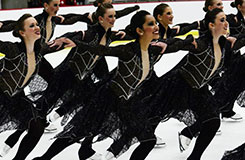
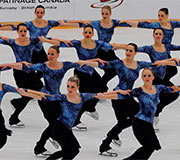
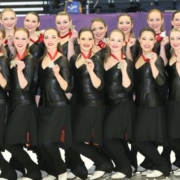
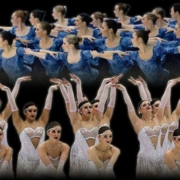
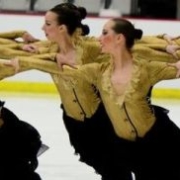
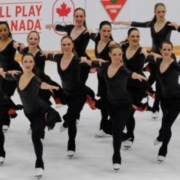
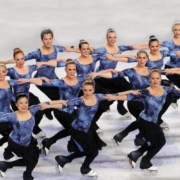
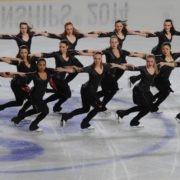
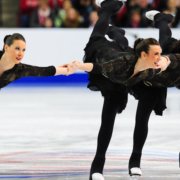


Leave a Reply
Want to join the discussion?Feel free to contribute!